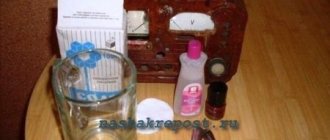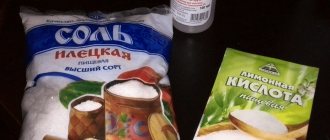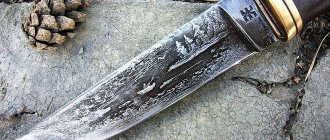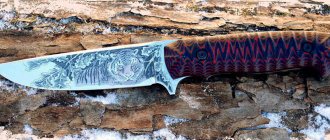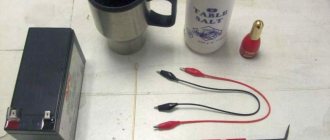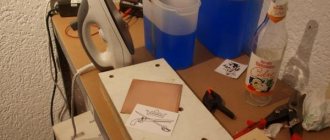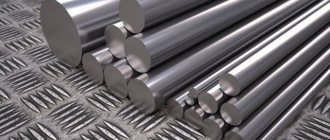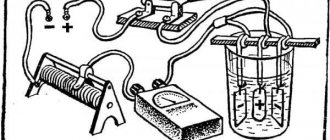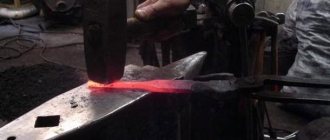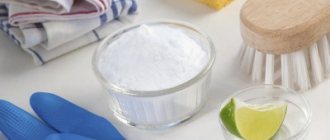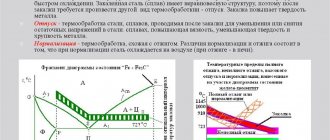Pickling is the process of cleaning and processing a metal workpiece. Chemical, acidic, alkaline, electrochemical - there are many ways to perform this technological operation. Where is metal etching used, why is it used in industry, what are the processing methods using this technology, all these issues are discussed in detail in the article below.
What is etching
This is a technology for removing the top layer from the surface of a metal part. The technology is used to clean workpieces from scale, rust, oxides and remove the top layer of metal. Using this method, the top layer is removed to search for internal defects and study the macrostructure of the material.
Using etching, they clean the part and increase surface adhesion. This is done for the subsequent connection of the metal surface with another workpiece, before applying paint, enamel, galvanic coating and other protective coatings.
The method allows you not only to quickly clean the part, but also to create the desired pattern on the metal surface. Using this method, the finest channels and complex images are cut out on a metal surface. You can clean large parts or rolled products. The processing depth is adjustable with an accuracy of several microns, which makes it possible to produce complex parts with small grooves and other complex elements.
Bath materials
Choosing the right material for making etching baths is a difficult task for chemists and materials scientists.
- ceramic coated
- glass covered brick
- wood, lead-coated concrete
- rubber derivatives
- Certain grades of stainless steel for acid baths.
The content of nitrogenous acid with impurities of hydrofluoric or hydrochloric acid allows the use of the same materials. The only exceptions are lead as a coating, ceramics with a high silicon content, due to their interaction. It is quite possible to use steel in alkali baths, monitoring the progress and intensity of electrolysis in close proximity to the material. Under certain conditions and acid content, its temperature, and nature, it is possible to use stainless steel grades for pickling tanks. Such, for example, as 8Х18Н8М or 10Х20Н25М4.
From the information provided in this review, we can conclude that the processing mode, the chemical composition of the bath, the need for additional mechanical processing, and the use of electrolysis should be determined based on specific initial conditions (steel grade, state of the oxide film, technological capabilities) and regulated in the context of the expected final result .
Source
Application of etching in industry
- For cleaning parts made of carbon, low-alloy and high-alloy steel, titanium and aluminum from oxide film.
- To improve adhesion before applying galvanic and other types of protective coatings.
- To prepare steel surfaces for hot-dip galvanizing.
- To conduct macroanalysis to detect the formation of intergranular corrosion in stainless steels.
- This technology is used to process small metal parts, such as watch gears.
- Copper processing is used to make semiconductor chips and printed circuit boards in electronics. This method applies a conductive pattern to the microcircuit.
- For quick cleaning of hot rolled metal products, heat-treated parts, from oxides.
- In the aircraft industry, this technology is used to reduce the thickness of aluminum sheets to reduce the weight of the aircraft.
- In the manufacture of metal inscriptions and drawings. Etching produces relief images drawn by removing a layer of metal according to a specific stencil.
Glossy paper
In addition to glossy paper (you can buy it at art supply stores, or you can simply cut a sheet out of a magazine), you will need a laser printer, an imaging application, and an iron. The image of the drawing should be mirrored and printed in full size. The image is applied to the surface and ironed several times. After the workpiece has cooled, the paper is washed off with warm water, and the toner remains on the surface of the part. The back and side surfaces that are not subject to etching must be protected with varnish or plasticine.
Read also: Designation of ouzo and differential machine on the body
Glossy etching paper
The main advantage of the method is that the smallest details of the image can be accurately transferred.
The main disadvantage is that you can only work in this way with flat or cylindrical workpieces. The method is very popular in the manufacture of printed circuit boards.
Types of etching
The main types of metal processing used in industry:
- electrolytic - there are cathode and anodic;
- chemical;
- plasma.
Electrolytic etching
Electrolytic or galvanic metal processing is used to quickly clean parts, apply engravings and produce grooves. Metal parts are immersed in an acid or salt electrolyte. The part becomes a cathode - a negative electrode or an anode - a positive electrode. Therefore, two types of electrolytic etching are classified - cathodic and anodic.
- Cathodic etching. The method is used to remove scale from the surface of carbon steel products after hot rolling or oil quenching. In cathodic etching, the material for the anode is lead, and the electrolyte is a solution of hydrochloric, sulfuric acid or an alkali metal salt. During the electrolysis process, hydrogen gas is actively released at the cathode, which interacts with iron and removes scale. During the cathode method, the metal surface is actively saturated with hydrogen, which increases the fragility of the workpiece. Therefore, the cathode method is not used for thin-walled products.
- Anodic electrochemical cleaning. This is the most common method in mechanical engineering. The process involves mechanically tearing off the oxide film on the anode with oxygen and mixing metal molecules with the electrolyte. An electrolyte is a solution of acids or salts of the metal being processed. Lead, copper and other metals are used as the cathode. During anodic treatment, the surface of the product becomes clean, with slight roughness, and the metal dissolves in the electrolyte. With this method, there is a risk of reducing the thickness of the workpiece and over-etching.
Chemical etching
The chemical treatment method is used to clean the surface of a part from oxide film, scale and rust for workpieces made of the following materials:
- ferrous metals;
- stainless and heat-resistant steels;
- titanium and its alloys;
- aluminum
For etching, sulfuric, hydrochloric or nitric acid is used. The workpiece is immersed in an acid or alkaline solution, molten salt and kept for the required time interval. The required cleaning time can range from 1 to 120 minutes.
The cleaning process occurs due to the release of hydrogen when the acid interacts with the metal. Acid molecules penetrate through pores and cracks under the oxide film. There they interact with the metal surface and hydrogen is released. The released gas tears off the oxide film and cleans the part.
Simultaneously with the oxides, the metal being treated dissolves in the acid. To prevent this process, corrosion inhibitors are used.
Plasma etching
With the ion-plasma method, cleaning and removal of the surface layer occurs by bombarding the part with ions of inert gases that do not react chemically with the molecules of the material being processed. Allows you to make high-precision notches and grooves with an accuracy of up to 10 nm. The technology is used in microelectronics.
The plasma-chemical method involves excitation of plasma in a chemically active medium, which causes the formation of ions and radicals. Active particles falling on a metal surface cause a chemical reaction. In this case, light compounds are formed, which are removed from the surrounding air by vacuum pumps.
The method is based on chemical reactions that occur when using reactive gases, such as oxygen, which are highly reactive. These gases actively interact in the gas discharge plasma. Unlike plasma treatment in inert gases, with this cleaning method, the active gas reacts only with certain molecules.
The disadvantage of this method is the lateral expansion of the grooves.
Etchants
Pickling of carbon steels is carried out in an 8-20% solution of sulfuric or 10-20% hydrochloric acid. With the obligatory addition of corrosion inhibitors (KS, ChM, UNIKOL) to eliminate the fragility of the material and reduce the possibility of over-etching.
Products made of stainless or heat-resistant steel are processed using a solution consisting of: 12% hydrochloric, 12% sulfuric, 1% nitric acid. If required, processing is done in several stages. The first is that scale is loosened in 20% hydrochloric acid. The second stage is immersion in a 20-40% nitric acid solution to completely remove surface contaminants.
The thick layer of scale that forms on stainless steel is removed during its production by 75-85% molten caustic soda with 20-25% sodium nitrate. After which, complete removal of oxides is carried out in 15-20% nitric acid.
Processing of aluminum and alloys based on it involves removing the refractory oxide film from the surface of the workpiece. For this purpose, alkaline or acidic solutions are used. Usually 10-20% alkali is used, at a temperature of 50-80 ºС, the etching procedure takes less than 2 minutes. The addition of sodium chloride and sodium fluoride to the alkali makes this process more uniform.
The purification of titanium and its alloys, carried out after heat treatment, is carried out in several stages. At the first stage, scale is loosened in concentrated caustic soda. Then the scale is removed in a solution of sulfuric, nitric or hydrofluoric acid. To remove the remaining pickling sludge, use hydrochloric or nitric acid with the addition of a small amount of hydrofluoric acid.
When processing copper and its alloys, etchants from hydrogen peroxide, chromic acid and the following salts are used:
- copper chloride;
- ferric chloride;
- ammonium persulfate.
This information material describes in detail the pickling process used in metallurgical plants. The method allows you to quickly clean the metal surface from oxides, scale, rust and other contaminants. Thanks to etching, it is possible to apply various designs to metal, create complex microcircuits and make microscopic channels of the desired shape.
Getting a color drawing
To give the resulting pattern, drawing or inscription an additional decorative effect, we suggest using a simple method accessible to everyone. To do this, apply a small amount of any nitro enamel to the treated area, achieving complete filling of the recess. This paint and varnish material dries quickly enough, so you can return to further work after an hour. After making sure the enamel is completely dry, remove any excess material that has fallen onto the surface of the etched piece using fine sandpaper. The use of a solvent in this case can ruin the entire work, since it smears the paint over the surface without completely removing it, and can give the pattern an unattractive dullness.
Mechanical polishing of the finished product on a felt wheel with GOI paste will give the painted etched pattern the final expressiveness.
Dear readers, comment on the article, ask questions, subscribe to new publications - we are interested in your opinion
Comments
Quite interesting, and not difficult at all. You can do all this yourself, all materials are available. There’s just one thing I didn’t understand: can you only etch metal in this way, or silver too? I have a bunch of scrap silver, I want to try to make a bracelet, and if silver is also etched in the same way, that would be great.
To etch silver, you can’t use simple salt; you will need a nitric acid salt: NaNO3, KNO3
what is the proportion for etching with copper sulfate?
In order for the process to go faster, you need to get a saturated solution - this means you need to add copper sulfate, stirring and observing the presence of residue at the bottom. Add the reagent until it is completely dissolved. As soon as the moment comes that you cannot stir the precipitate, it means the solution is “saturated”.
Here's a question: NaNO3 is sodium nitrate, if so, how to use it? I want to etch it on a silver spoon.
Yes, that’s absolutely right, you can also take ammonium nitrate.
Take a spoon and cover the entire surface with a protective compound, except for the areas to be etched. You also leave room for contact with the positive pole of the source. The spoon is immersed in the solution along with a metal strip connected to the negative contact of the source.
I just tried it, changing the technology a little. So, instead of varnish, I used laser-iron technology (this is how radio amateurs make printed circuit boards). I did not place the workpiece in the solution, but dipped a cotton swab into the solution, connected to a charger for car batteries. The result is a beautiful drawing in 5 minutes. The etching thickness is about 0.2-0.3 mm. The only negative is that the solution still seeped under the toner and left small holes. Subsequent processing with a rubber-cord wheel and polishing made it possible to somewhat level out this annoying nuisance, but not completely. I believe that if I had not rubbed the surface with cotton wool, but still placed the workpiece in the solution, everything would have turned out great. But the workpiece is large, so this was not possible. It is better to apply the stencil using photoresist films or varnish.
For large items, such as decorative swords, daggers, spears, etc., PVC sewer pipes with a cap at one end can be used as a container. It is best to fix the resulting container in a vertical position, although, if necessary, the pipe can be cut lengthwise and a plug can be added to the other end. For etching such products, it is best to use a welding inverter, setting it to 20-40 amperes. At higher current levels, the solution boils away too quickly. The pattern is applied according to the principle of the method with nail polish, only acrylic paint is used instead.
